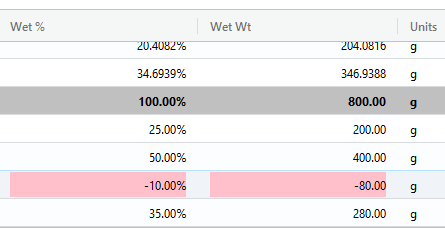QS Ingredients | ||
| ||
Types of QS Ingredients
You can define a QS ingredient to have a particular purpose in a formula, by
selecting the appropriate option in the ![]() QS tab in Ingredient Properties:
QS tab in Ingredient Properties:
QS to Keep Formula Weight Constant: The ingredient's level makes up the difference between the sum of the levels of the other ingredients in the formula, and 100%. Formulation Design automatically adjusts the percentage of the QS ingredient. An example of a formula-wide QS ingredient is water.
- QS to Keep Phase Weight Constant: The ingredient's level makes up the difference between the sum of the levels of the other ingredients in the phase, and 100% of the phase's level. In this way, the level of the phase remains constant in the formula. An example use for a phase-based QS ingredient is in an aerosol formula, where the propellant phase must remain constant because the percentage of the phase affects the aerosol’s psi.
QS to Unknown or TBD Volume: The QS ingredient has an unknown volume, or a volume that has yet to be determined. This is because volume measurements do not add linearly, owing to differences in miscibility (in the case of liquids) or to inherent variability (in the case of gases, which do not have fixed volumes).
This option is for use in formulas that are batched by volume (see Formula Properties: Weights). Specify the formula's total volume in its Batch Size property, and the quantities of other ingredients. Then, set the volume of the QS ingredient or ingredients as unknown.
QS to Selected Piece Size (Dry): The QS ingredient level makes up the difference between the levels of other ingredients in a piece, and 100% of the piece weight, when the piece cannot exceed a particular dry weight.
Quantity is Unknown: The QS ingredient is used in a formula that is in the experimental design stage, and serves as a placeholder for amounts of ingredients that you will not know until you make the batch.
Flagging of Negative QS Values
If a QS ingredient belongs to a formula or phase in which the other ingredients add up to more than 100%, its levels in the formula grid are negative. The cells for negative QS values are colored red, to draw your attention to the fact that the ingredient levels require recalibration:
